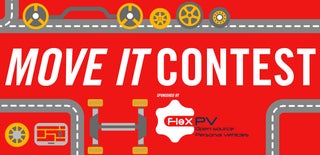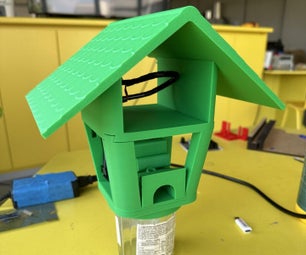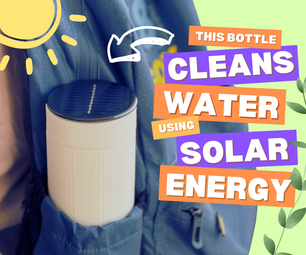Introduction: TV Remote Controlled Paper Planes
I love everything that flies. In my childhood I made a lot of paper airplanes, but they have a huge problem. After some minutes they fall down. So now I designed a small device that allows you to control the speed and the height of your airplane with a TV remote control. If you press any button on the remote the small motor starts to rotate the propeller and the plane accelerates. This thing can be suited to any paper plane, The weight of the full gadget is 9 grams.
The power source is a small Li-Poly battery that can power up the circuit for about 10 minutes. It takes some time until you'll learn to fly, but isn't so hard. I've had a lot of experience with this circuit. This control unit can be used for others too, can drive LEDs, motors, relays or anything. Can be used for a home-automation project too.
Step 1: Tools and Parts
Tools:
- soldering iron
- cutting tool
- glue
- crafting tools or rotary tools
Materials:
- small Li-Poly battery
- a piece of PCB
- electric micro motor with propeller
- 100uF cpacitor
- 100 ohm resistor
- 220 ohm resistor
- Red LED
- BC557 transistor
- IR reciever 38kHz
- straws
- valcro
- and a plastic piece
These parts are very cheap so you can build this project from less than 6 bucks. You can replace resistors with another, but the value can't be higher than 470 ohms. So let start building!
Step 2: Prototyping and Experiments
This step isn't so important I just took some pictures about the prototyping of the circuit. I made 5 different circuits, then chosed the circuit that can drive a small signal LED and the motor. In the next step you can see the diagramm of this circuit.
Step 3: The Plan
Following this circuit diagramm solder together the parts.
But how it works?
The IR reciever accepts the signals from the remote control. The capacitor filters the frequency of the 38kHz signal so your LED won't blink. This is very important. The BC557 transistor amplifies the current of the output then drives the motor and the LED.
Step 4: Soldering
You'll need to design the circuits as small you can, or the weight will be too big. My one is a little bit bigger than a coin. This is an ideal size.
Step 5: The Plane
Fold this paper airplane by following the pictures.
Step 6: Center of Gravity
Get a needle and a pencil, because we'll need to find the center of gravity of this plane. You'll need to situate here the control unit. I think you can see clearly everything from the pictures. Hang the plane from the needle and draw straight down. And repeat this three times.
Step 7: Calculating the Distance
The distance between the CU (control unit) and the CoG (center of gravity) is 0.5 cm. With the formula D1xG1=D2xG2 we can calculate the distance between the CU and the motor. For me this is 4.05 cm.
Why is this important?
-If we just make a random distance the plane will fall down because isn't in balance.
Step 8: Build the Frame
Cut a straw with a 4.05 length and glue to the plastic piece that will be suited on the plane. Glue the motor on this straw.
Step 9: A Little More Building
Fix the CU on the plastic piece then the velcro on the other side. Glue the valcro on the battery too. Connect them then charge up and test it.
Step 10: Testing
If you press any button the TV remote control the motor starts to spin very fast. Generates a very cool wind. the LED doubles as a battery level indicator and as a signal indicator. If the battery is charged up the LED blinks, but if not lights dimly. Now equip on the plane.
Step 11: Equip on the Plane
Just take the CU and slide the plane in. Cut a small space for the propeller and your plane is ready to fly.
Step 12: First Fly
Drop the plane and when it descends press a button and it will fly like a bird. On the third picture and on the fourth picture it flies very neatly.
If you liked this give a kindly vote for me and thanks for watching! ;)














